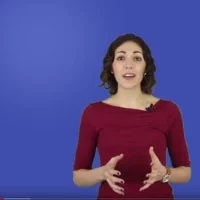So what is the one skill that you really need for the TOEFL Reading section? It's scanning. What's scanning? It's a way of reading. Many students get confused about this, so let's be clear about what kind of reading this is.
There are two words in English that are often confused: skim and scan. To skim something is to look over it casually, getting the general gist. For example, if you want to get an idea of what's going on in the news, you might skim the newspaper. We're not talking about skimming. We're talking about scanning. And it's a very different kind of reading. In fact, it's almost the opposite of reading casually for the general idea. When we scan, we are reading specifically for a particular word or phrase. In fact, we may not even understand exactly what is said in the passage we're reading. We're simply looking for a specific word or phrase.
Check out: How Important Is English Grammar for Your TOEFL and IELTS Scores?
Let’s look at an example:
The constitution of turtle diets tends to develop on age of the turtles in question. Most adult turtles eat a range of foods, including algae, aquatic plants, and invertebrates such as snails and worms. Juvenile turtles, however, tend to have a carnivorous diet, because of the large amounts of protein required to support their rapid growth.
That is a pretty complicated passage and you might not know what every word in it means. That’s totally okay. You do not need to understand the passage to scan it. To scan the passage means to just look through it quickly to find a word. For example, look through the passage again and find the word “carnivorous”. The point of scanning is that many times it is all you need to do in order to answer questions on the reading section, as is the case in this example question:
According to the paragraph, the carnivorous diet of juvenile turtles is due to:
- The destruction of their traditional habitats
- The nutritional requirements on their growth
- Their preferences for food that they can hunt themselves
- Their adoption of the diet of adult turtles
So let’s see how we can use scanning to answer this question. First, look for an unusual word in the question. In this example it is the word “carnivorous”. Next, find the sentence in the passage with this word: “Juvenile turtles, however, tend to have a carnivorous diet, because of the large amounts of protein required to support their rapid growth.” This sentence contains everything we need to answer the question. So, juvenile turtles have a carnivorous diet because they need a lot of protein to grow. This gives the answer to the question, in this case it is B. None of the other answers fit the information that we found in the sentence. Notice that we did all of this without even knowing what the word “carnivorous” means. So, to answer a TOEFL reading question you should learn to scan, because often you’ll be able to answer a question just by using words from the question to scan the passage for the information that you need to find the correct answer.
Check out: How to Read Faster during TOEFL Reading Section (Video)



